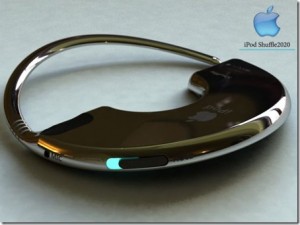The ubiquitous iPod is currently one of the most popular devices for listening to music, but it was not simply developed overnight. From the early cassettes to the compact disc, music technology has undergone drastic changes over the past century and will only continue to develop in the future.
In 1877, Thomas Edison introduced the phonograph, a device that consisted of a cylinder covered in tin foil, which was conducive to detecting small vibrations of a stylus as it cut groves into the cylinder in accordance with sound waves. This cylinder could then be removed, transferred to another phonograph, and the originally recorded sound could thus be reconstructed by using the vibrations recorded in the grooves. Alexander Graham Bell later modified Edison’s phonograph by replacing the tin foil with wax, resulting in enhanced sound quality.

Ten years later, Emile Berliner invented the gramophone, which used a flat, zinc disc in lieu of a cylinder. Discs remained a popular medium to record and listen to music through the 1900s. Then, vinyl was introduced during World War II for sending discs to soldiers and continued to be the most popular medium for disc manufacturing even after the war.
The use of cassette tapes truly brought the music industry into the electronic age. However, although magnetic recording had been available since the 1930s, it did not become popular in the music industry until the mid 1960s. Early cassettes consisted of long rolls of tape covered with ferric oxide in a plastic shell. A small electromagnet within the cassette received audio input through a thin wire wrapped around the base of the magnet. This magnet created a flux that matched the audio input, so when a tape was pressed against the magnet, the metal particles recorded this information by permanently aligning themselves in accordance with the flux. Small and compact, cassettes also lead to Sony’s development of the Walkman in 1979, introducing the first instance of portable music technology.

The 1970s also ushered in the beginning of the optical compact disc, or what we colloquially refer to as CDs. Composed of a polycarbonate plastic, CDs consist of millions of microscopic bumps arranged in a single spiral groove. Audio information is stored digitally in these grooves, similar to the small vibrations in record grooves. In order to read these bumps, a laser is shined on to the disc surface, and the slight disturbances in the reflection are detected and the digital signal is processed into sound.
Soon, developments in Internet technology and the introduction of the MPEG-1 Audio Layer 3, or MP3, format transformed the music industry. MP3 technology allows music files to be compressed up to 1/12 of their original sizes, facilitating the simple sharing of music on the Internet. Although Audio Highway created the first publicly available MP3 player in 1997, MP3 players did not become widely popular until the introduction of the iPod by Apple in 2001. The first iPod boasted a sleek, slender body and a memory capacity that could hold up to 1,000 songs. Its small size was achieved by using a microcontroller – a small computer originally designed for running automated machines, such as power tools and car engines. Microcontrollers are significantly smaller than the microprocessors that were found in previous MP3 players, allowing iPods to be much more compact.

Music technology continues to evolve today and presents many exciting possibilities for the future. For example, potential future concepts for Apple products include technology that eliminates headphones by utilizing ultrasound technology and employing music players that will automatically sync to iTunes and charge via the Internet. In addition, these iPods are projected to have memory capacities that may reach the order of terabytes in the near future.
However, memory capacities may soon be meaningless with the introduction of online music streaming. Music is quickly merging with the computer revolution, and music sites, such as Spotify, allow users to stream millions of songs online for free. These websites combined with faster network speeds on mobile phones may soon provide music lovers with the entire Internet at their disposal. These technologies are only an inkling of what music technology might hold for the future. With so many advancements looming on the horizon, we are sure to look back on our iPods with the same nostalgia that we now have for records and cassettes.

